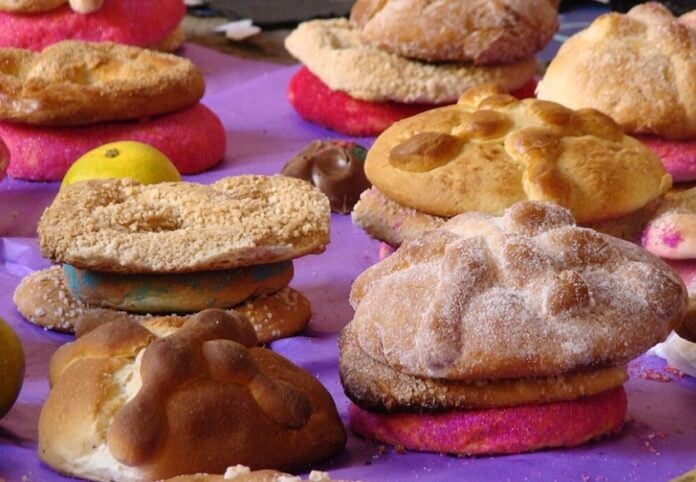This happened in July 2024. My father came home with a big smile on his face, carrying an enormous white box.
“It’s a surprise, he said with a grin, but everyone should wait until dessert to find out what that was all about.”
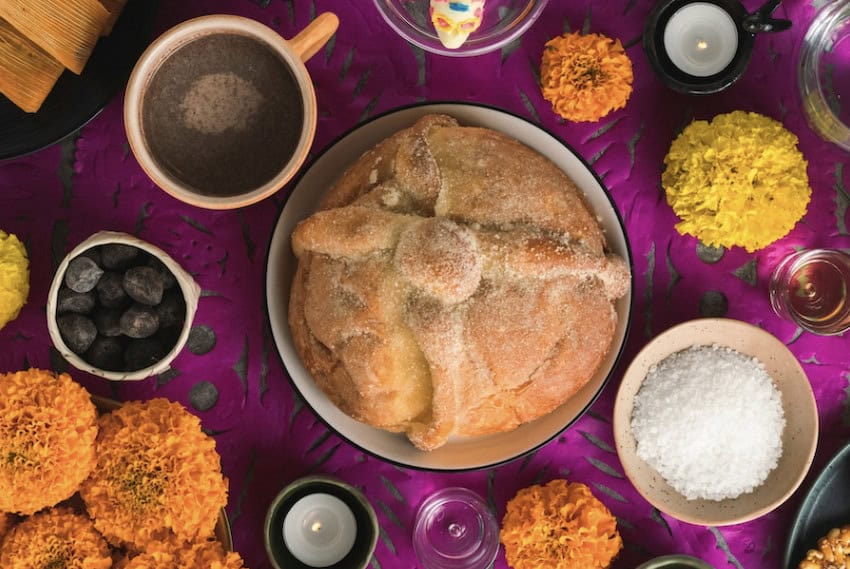
So we waited.
After lunch, he opened the box in front of my sister, mother and me: “Pan de muerto!”, he exclaimed, excitedly.
I thanked him, of course, but something seemed off: Pan de muerto in summer?! It felt almost like sacrilege, since it is a treat exclusive to the Day of the Dead in Mexico, which happens every year on November 1 and 2.
So why do contemporary Mexicans eat pan de muerto all year long, you may ask? As it happens, my father is not the only Mexican who craves this traditional sugary bread year-round.. Tradition dictates otherwise, but… is tradition being crushed by our overwhelming desire to eat this sweet bread beyond the November festivities?
What is pan de muerto, and when should it be eaten, traditionally?
Pan de muerto is unmissable across Mexico: it’s a round, wonderfully fluffy piece of bread sprinkled all over with white sugar and featuring handcrafted bread cylinders resembling human bones on top. As a child, the first thing I did was eat this “button” on top.
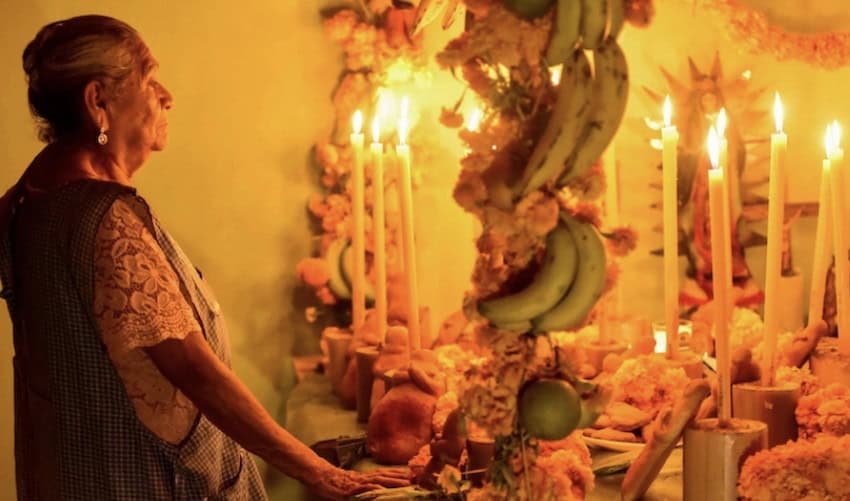
Nowadays, you can find it practically anywhere. Originally, however, it was more easily found in Mexico’s central and southern regions.
The tradition dates back to the time of the Spanish conquest, when the Spaniards, horrified by ritual human sacrifices performed by the Mexica, made a wheat bread that was dipped in sugar painted red to symbolize a heart and the sacrificed person’s blood. The toasted bread cylinders I mentioned earlier are, indeed, representations of human bones.
“Eating the dead is a true pleasure for Mexicans”, wrote INAH researcher José Luis Curiel Monteagudo in the 1999 book “Azucadores afanes, dulces y panes” (Sugary Desires, Sweets and Breads). “The phenomenon is embraced with respect and irony; death is defied; they mock it by eating [pan de muerto].”
Curiel was right about that: Mexicans cultivate a devotional relationship with death, worshipping her through our traditions. We even eat human bones — symbolically, of course!
The size of bread and the number of “bones” in pan de muerto change depending on the region. In the southwestern state of Oaxaca, artisans draw intricate patterns on the bread’s surface. In Mexico City’s Coyoacán neighborhood — home of Mexican art legend Frida Kahlo — it’s a centuries-old tradition to eat it with nata, a rich cream popular in Mexico. However, the essence remains the same: a round, fluffy piece of bread topped with a delicious sugar coating and the unmistakable smell of orange blossom.
Even today, 500 years after its creation, pan de muerto remains one of Mexico’s most beloved seasonal treats. According to Statista’s latest poll, nearly 94% of respondents said they consumed pan de muerto during the Fall festivities. Namely, on Nov. 1 and 2.
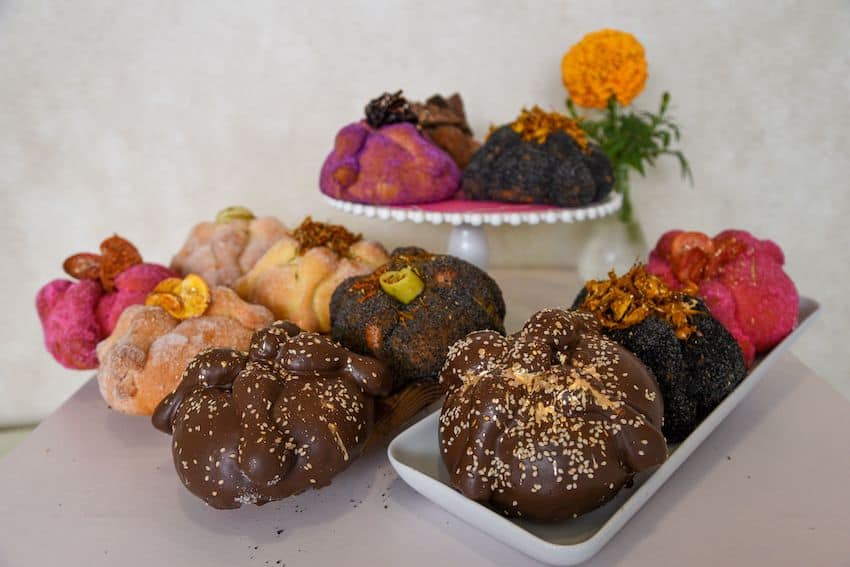
Yes, that’s right: Nine out of 10 Mexicans cannot fathom Día de Muertos without pan de muerto — and possibly champurrado or café de olla too.
Cempasúchil, chocolate and more recently, matcha pan de muerto are among the favorite flavors these days. In Mexico City’s Roma/Condesa area, I’ve seen bakeries offer even the Dubai (what?) flavor, featuring pistachios. However, you can still find the more traditional recipes in local markets, the best places to have of the full experience.
Are supermarkets meddling with a sacred tradition?
I created a poll on my personal Instagram account on this subject. The question was: “What do you think of the fact that pan de muerto is sold all year long?” Most of my friends and inner circle are, of course, Mexicans. And, yes, some of us tend to be strongly opinionated — especially about our traditions.
When asked their thoughts on the matter, Yulied Rivera, 33, a local physiotherapy student, told me, “It takes away what makes it special.”
Another respondent pointed out, “As humans, we need rituals.” If these items are available off-season, they added, “That [feeling] blurs away.”
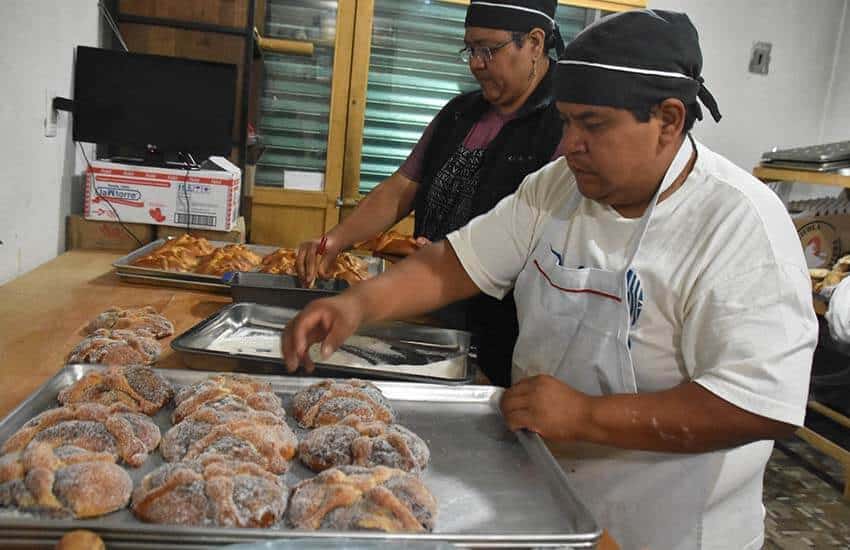
Restaurant owner and chef Pablo Porras poignantly said, “These capitalist transgressions gradually degrade traditions and their meanings.”
For him, as a local business owner who values the artisanal preparation of seasonal dishes, the worst part is the loss of ingredient quality.
“[The recipe] tends to be modified to facilitate their production […], thus changing their ‘original’ or distinctive flavor.”
In the specific case of pan de muerto, Porras told MND, supermarkets and foreign companies don’t use the traditional orange blossom, “an expensive and scarce ingredient rarely found in pan de muerto from a chain store.”
Although these companies’ products do meet consumer demand, the flavors of the past are being replaced by industrial ones. Bread artisans who maintain the use of the original flavors have to sell their products at extremely high prices, “often inaccessible to the common folk,” he said.
So, in that sense, yes, supermarkets and multinational chains are meddling with a sacred tradition. In the end, we eat pan de muerto to welcome our beloved departed back from the realm of the dead, just for one day every year. We pray, we dance, we celebrate their return with these symbols of joy. We also feel a tinge of nostalgia.
Yet, although I’m often a naysayer and like to complain about these kinds of things, I would never deny my father his big smile when he finds pan de muerto at his closest supermarket — even if it’s summer and there are months to go until we meet again with my deceased grandparents. And, yes, I would probably join him in eating a not-so-traditional pan de muerto.
I’m sure Grandma and Grandpa would be happy for him and enjoy an off-season dessert with us too.
Andrea Fischer contributes to the features desk at Mexico News Daily. She has edited and written for National Geographic en Español and Muy Interesante México, and continues to be an advocate for anything that screams science. Or yoga. Or both.
